Most people think they know how to bond with cats, but they’re usually doing it all wrong.
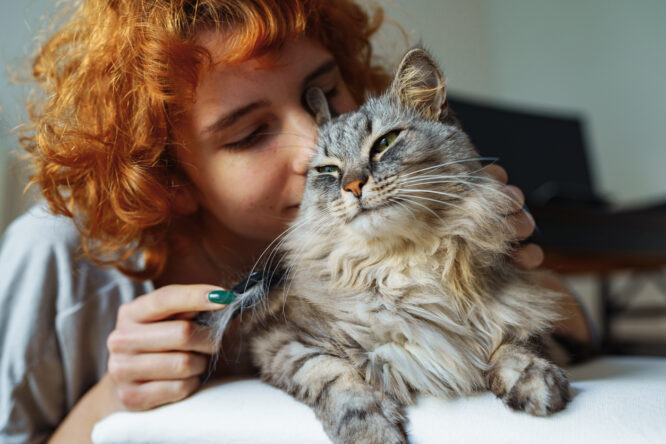
We tend to approach cats like they’re small dogs or furry humans, when really they’re completely different creatures with their own social rules and preferences. The key to building a real relationship with your cat isn’t about forcing affection or overwhelming them with attention—it’s about understanding how they actually communicate and what makes them feel safe and valued. Once you start speaking their language instead of expecting them to speak yours, you’ll be amazed at how much deeper your connection becomes.
1. Let them come to you instead of chasing them.
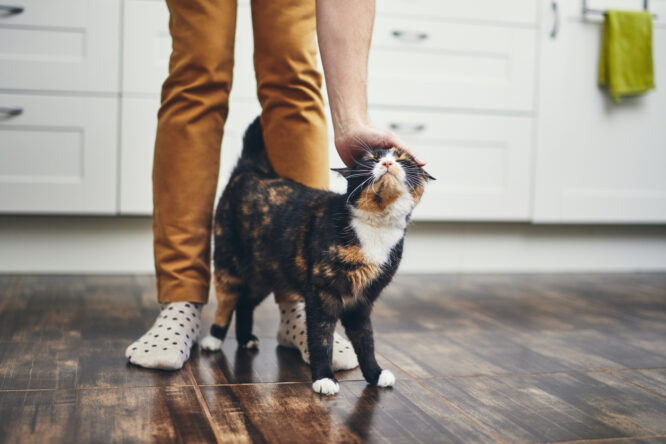
Cats are all about consent and control, so the fastest way to make them uncomfortable is to corner them or force interaction when they’re not in the mood. Instead of picking them up whenever you want cuddles or following them around the house, sit down somewhere and let them decide whether they want to approach you. This might feel counterintuitive, but cats are way more likely to seek affection when it’s their idea.
When you respect their space and let them initiate contact, you’re showing them that you’re trustworthy and safe. Cats remember this stuff, and they’ll start coming to you more often once they realise you won’t grab them or force them to stay longer than they want.
2. Learn their unique way of asking for attention.
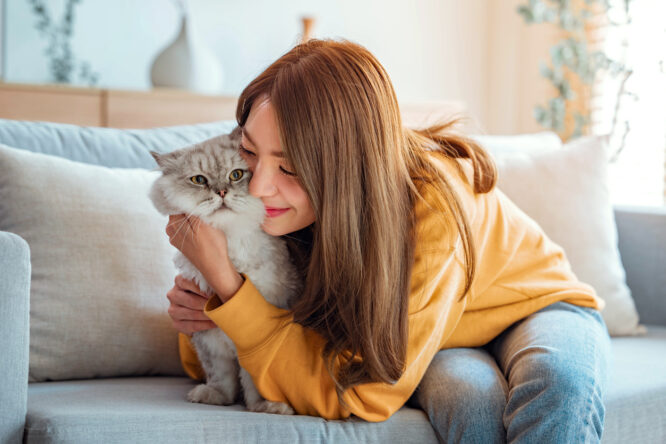
Every cat has their own special signals for when they want interaction, and most people miss these completely. Some cats will sit just out of reach and stare at you, others might walk back and forth in front of you, and some will do this weird thing where they flop down nearby and roll around. Pay attention to what your cat does right before they usually want pets or play time.
Once you start recognising and responding to their specific signals, your cat will feel understood in a way that really matters to them. Your cat will start using these signals more often because they’ve learned you actually pay attention and respond appropriately.
3. Slow blink at them regularly.
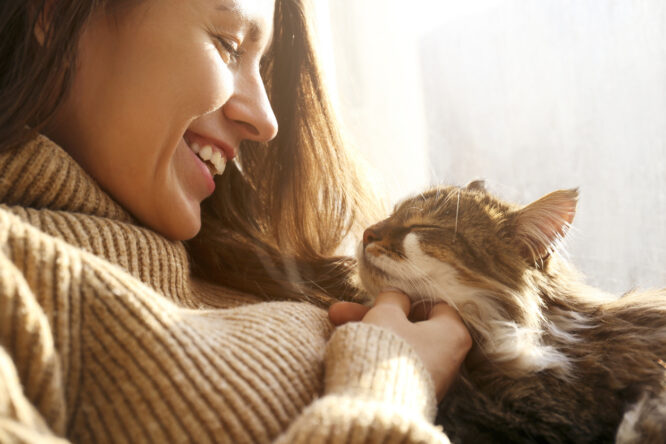
This is probably the easiest way to tell your cat you love them in their own language. When cats are relaxed and happy, they do these slow, deliberate blinks that basically mean “I trust you and feel safe.” If you slow blink at your cat while making eye contact, you’re essentially giving them a kitty kiss that they’ll actually understand.
Most cats will slow blink back at you once they get used to this, and it becomes this sweet little communication thing between you two. It’s way more meaningful to them than saying “I love you” in human words because it’s something they actually do with each other.
4. Respect their daily routines and work with them.
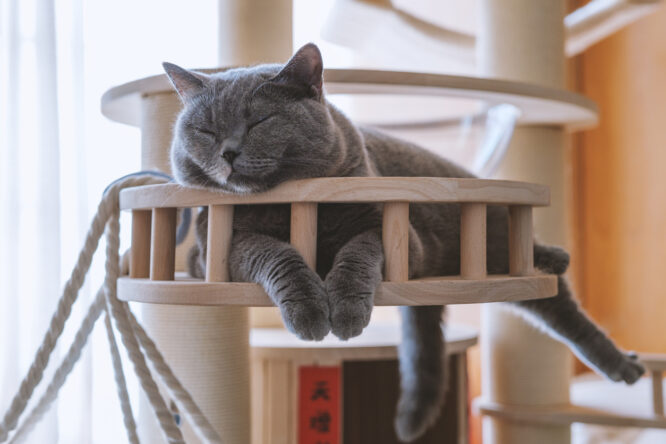
Cats are creatures of habit who feel most secure when their day follows a predictable pattern. Instead of disrupting their natural schedule, try to work your bonding time around when they’re naturally most active and social. Most cats have specific times when they’re more playful, cuddly, or just want to hang out, and these times are usually pretty consistent.
When you align your attention with their natural rhythms, you’re meeting them where they are, instead of expecting them to adapt to your schedule. This makes your interactions feel more natural and enjoyable for them, which strengthens your bond way more than trying to force quality time when they just want to nap.
5. Play with them in ways that mimic hunting.

Cats don’t just play for fun—they play to satisfy their hunting instincts, and this is actually one of the most important ways you can bond with them. Use toys that move like prey animals: quick, unpredictable movements followed by hiding, then sudden appearances. Let them stalk, pounce, catch, and “kill” the toy, and always let them win at the end.
This kind of play satisfies something deep in their nature and makes them associate you with one of their most fundamental needs being met. A tired, satisfied cat is also way more likely to want to cuddle afterward because they’ve worked off their energy and feel content.
6. Talk to them and respond when they talk back.

Most cats are surprisingly chatty once they realise you’re actually listening to them. Start conversations with your cat using different tones of voice—some cats respond to high-pitched sounds, others prefer lower, quieter voices. When they meow back at you, respond like you’re having a real conversation, even if you have no idea what they’re saying.
Cats who get talked to regularly often become more vocal and social because they’ve learned that communication with humans leads to good things. Some cats will even start “telling” you about their day or complaining about specific things if you’re a good listener.
7. Create cosy spaces near where you spend time.
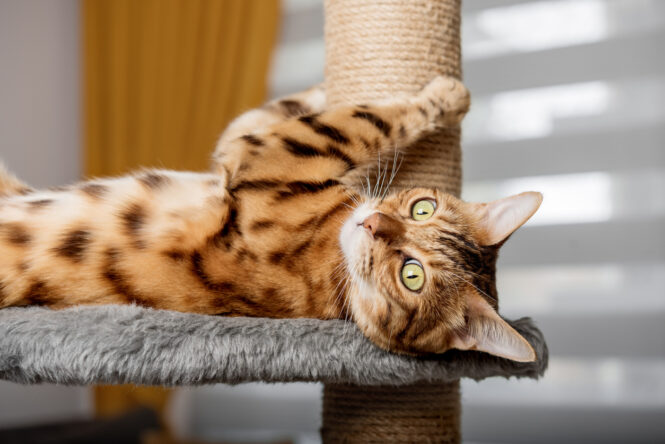
Cats want to be near you without necessarily being on top of you, so set up comfortable spots close to your usual hangout areas. Put a soft blanket on a chair near your desk, or set up a cat bed close to where you watch TV. This lets them choose to be social while still having their own space and an easy escape route if they need it.
When you make it easy for your cat to be near you on their own terms, you’ll probably find them hanging out with you way more often. They get the comfort of your presence without feeling trapped or overwhelmed, which is exactly how most cats prefer to socialise.
8. Learn where they like to be touched and stick to those spots.

Most cats have very specific preferences about where they like to be petted, and going outside those zones can quickly turn a pleasant interaction into an annoying one. Generally, most cats enjoy being petted around their head, cheeks, chin, and behind their ears, but many don’t like their belly, paws, or tail touched. Pay attention to your cat’s body language and stop immediately if they seem uncomfortable.
When you consistently touch them in ways they enjoy and avoid the spots they don’t like, they start to really trust you and look forward to physical affection. Cats remember people who respect their boundaries, and they’re much more likely to seek out pets from someone who makes them feel good.
9. Give them high places to observe from.

Cats feel safest when they can see everything that’s happening from a high vantage point, so giving them access to tall furniture, cat trees, or shelves shows that you understand their needs. When cats feel secure in their environment, they’re much more likely to be social and affectionate with their humans.
If you notice your cat likes to perch somewhere specific to watch you, don’t discourage this behaviour—embrace it. They’re choosing to spend time observing you because they find you interesting or comforting, which is actually a huge compliment in cat terms.
10. Respect their need for personal grooming time.

Cats spend a huge portion of their day grooming themselves, and this isn’t just about staying clean—it’s how they self-soothe and regulate their emotions. Never interrupt a grooming session or try to redirect their attention when they’re in the middle of cleaning themselves. This is their meditation time, and disrupting it can actually stress them out.
Some cats will even start grooming you if they really trust you, which is one of the highest compliments a cat can give. If your cat licks your hand or hair, don’t pull away—they’re including you in their grooming routine, which means they consider you family.
11. Be consistent with your energy and approach.

Cats are really sensitive to human energy and mood, so try to be calm and consistent in how you interact with them. If you’re stressed, excited, or chaotic, your cat will pick up on that and might avoid you until you settle down. They prefer humans who are predictable and steady because it makes them feel secure.
This doesn’t mean you have to be boring around your cat, but sudden movements, loud voices, or erratic behaviour can make them nervous. Cats bond best with people who make them feel safe and relaxed, so being the calm, steady presence in their life will make them much more likely to seek you out.
12. Share meals in a way that makes sense to them.

Food is a big deal in cat relationships, but most people think this just means giving treats randomly. Instead, try to create positive associations with meal times by being present and calm while they eat. Some cats like having their human nearby during meals because it makes them feel safe, while others prefer privacy.
You can strengthen your bond by establishing feeding routines where you’re involved in the process—not just dumping food in a bowl, but actually participating in their meal time in whatever way they’re comfortable with. This kind of routine builds trust and makes them see you as a provider and protector.
13. Understand that independence is part of love for cats.

The biggest mistake people make with cats is thinking that love means constant togetherness and attention. For cats, being able to choose when to be social and when to be alone is actually a sign of a secure, healthy relationship. If your cat feels comfortable ignoring you sometimes or going off to do their own thing, that means they trust that you’ll still be there when they want company.
Don’t take it personally when your cat doesn’t want to interact—it’s not rejection, it’s just cat nature. The cats who are most bonded to their humans are usually the ones who feel free to be independent because they know the relationship is secure.




